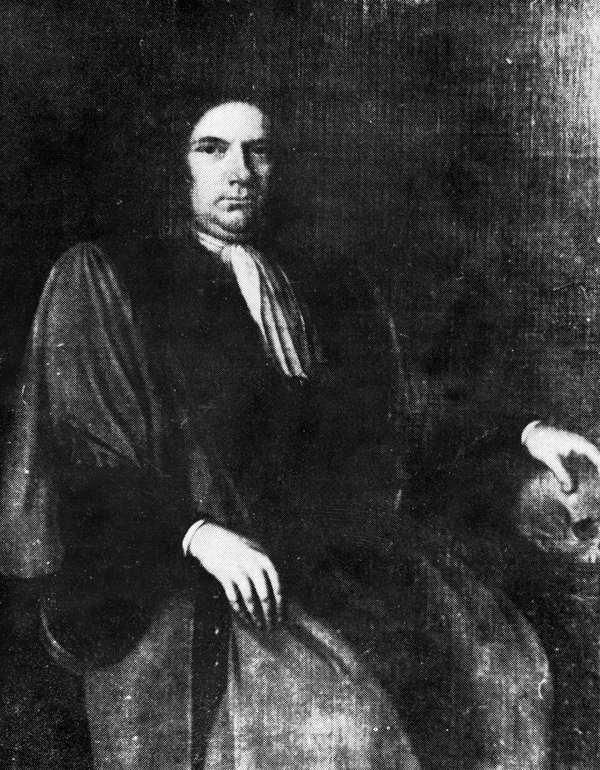Description of previous item
Description of next item
Dr. Andrew Turnbull and the Origins of New Smyrna Beach
Published May 5, 2014 by Florida Memory
The British only owned Florida for a brief moment (1763-1783), but during that time they did take a stab at turning the territory into a productive colony. In 1764, the British Parliament set aside £500 (British pounds sterling) as a bounty for cultivating silk, cotton, and indigo in East Florida, and authorized generous land grants for citizens who stepped forward to develop these industries.
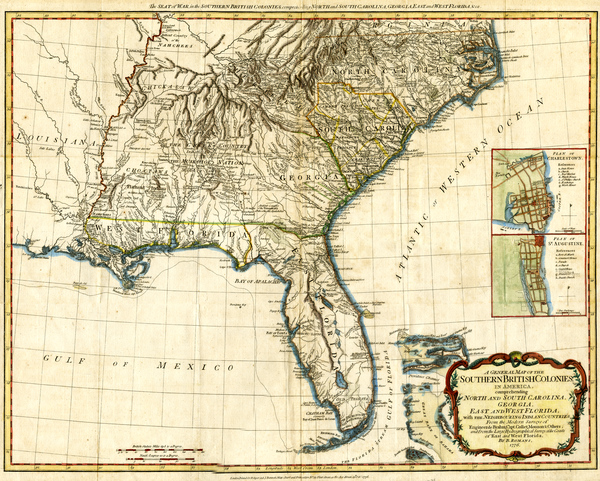
A General Map of the Southern British Colonies (1776). Note the separation of East and West Florida.
Dr. Andrew Turnbull, a Scotsman and a physician, convinced a number of his wealthy friends in Britain to take advantage of these offers and start a new colony in East Florida. Turnbull planned to employ a number of Greeks from Asia Minor as laborers for his new venture. He chose a Greek labor force because he felt they would be more accustomed to the warm climate they would encounter in Florida, and because he believed he would be able to convince a good number of them to leave the Ottoman Empire, where labor conditions were tough.
Turnbull’s knowledge of the eastern Mediterranean was considerable. He had spent a number of years as a British consul in the Ottoman Empire, and had married the daughter of a Greek merchant at Smyrna in Greece.
In 1766 and 1767, Turnbull and two of his business associates, Sir William Duncan and Sir Richard Temple, acquired land grants of 20,000 acres each, which Turnbull was to select from unclaimed lands in East Florida. After a brief stay in St. Augustine, Turnbull sailed southward along the Atlantic coast past what we now call Ormond and Daytona beaches, and entered Mosquito Inlet, where he encountered an attractive region dotted with large magnolia, live oak, and bay trees. The Scotsman was delighted with what he saw, and decided to make this the site of his new colony. He named it New Smyrna in honor of his wife’s birthplace and the homeland of his future Greek labor force.

East Florida Governor James Grant, who received Turnbull upon his arrival at St. Augustine. This portrait was painted circa 1850 by Allen Ramsey.
Turnbull crossed the Atlantic once again to secure more land and the assistance of the government in setting up the new colony. The British government took a considerable interest in New Smyrna, providing money for transporting laborers and developing infrastructure. In the spring of 1767, Turnbull sailed into the Mediterranean to hire workers for his new enterprise. He encountered unexpected resistance from the Ottomans over his plan to hire away Greek workers, so he made stops in southern Italy and Minorca to pick up more. By the time Turnbull finally sailed for East Florida, he had about 1,500 workers under contract, mostly Minorcans. These settlers would be indentured servants. In return for their passage to New Smyrna, the laborers would be required to work for a period of years, and then they would be entitled either to a plot of land in East Florida or passage back to their home country.
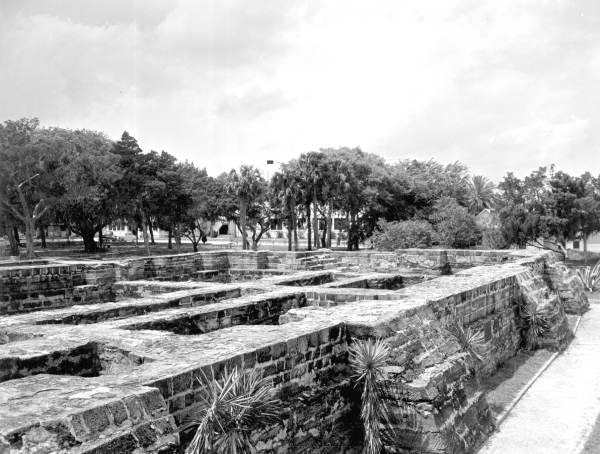
Remains of a building from Andrew Turnbull’s New Smyrna colony. The structure was built of coquina cement around 1768 and was used as a warehouse. The building was built on top of a large Native American shell mound (photo 1953).
By the end of the summer in 1768, Turnbull and his workers were settled in at New Smyrna, and the process of clearing the land and preparing it for cultivation was underway. The work was difficult, and a number of workers died from disease and as a result of raids by Native Americans in the area. The New Smyrna venture did eventually produce good crops, however, and for a few years all appeared to be working in good order. Turnbull’s relationship with his laborers deteriorated as the years went by, on account of poor working conditions and the harsh practices of his overseers. In 1777, the laborers marched northward to St. Augustine to complain to Governor Patrick Tonyn, who provided them with shelter.

East Florida Governor Patrick Tonyn, who gave refuge to discontented workers from New Smyrna after they marched to St. Augustine in 1777 (circa 1774-1784).
The colonists decided to stay in St. Augustine, which brought an end to the plantation at New Smyrna. Shortly afterward in 1783, the Spanish retook Florida as part of the Treaty of Paris, and Andrew Turnbull moved to Charleston, South Carolina. The New Smyrna venture had ended, but the colonists continued to live in East Florida, mostly along the Atlantic coast of northeastern Florida. The Florida Photographic Collection contains several photos depicting Minorcan foodways and other traditions that have lived on into our own era, living legacies of the New Smyrna Minorcans’ journey across the Atlantic over two centuries ago.
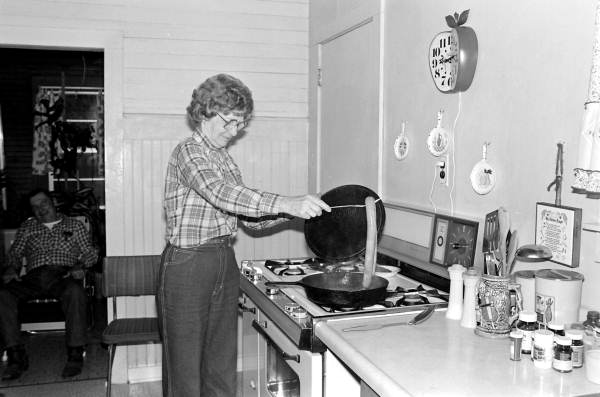
Margaret Triay prepares vinegar sausage with datil peppers, a traditional Minorcan specialty (1983).
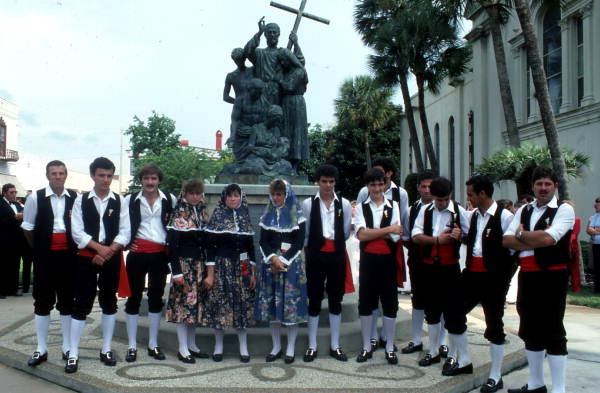
A Minorcan dance group from St. Augustine (October 1983). They are standing in front of a statue dedicated to the memory of Father Pedro Camps [Campos?], who accompanied the Minorcans to Florida.
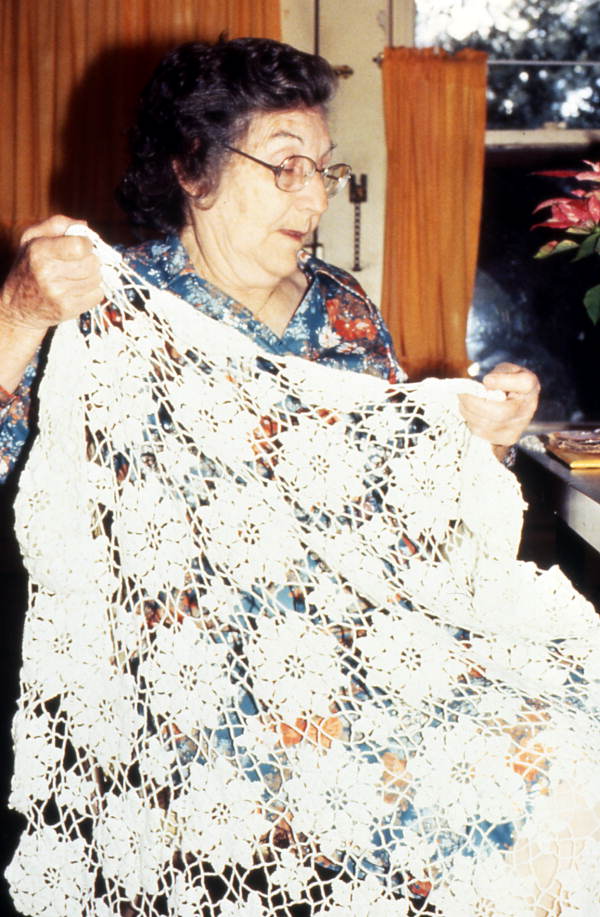
Theresa Griffin displaying an example of Minorcan crochet and needlework at Elkton, Florida (January 1985).
Search Florida Memory for more images depicting Minorcan traditions still alive and well in Florida!
Cite This Article
Chicago Manual of Style
(17th Edition)Florida Memory. "Dr. Andrew Turnbull and the Origins of New Smyrna Beach." Floridiana, 2014. https://www.floridamemory.com/items/show/295169.
MLA
(9th Edition)Florida Memory. "Dr. Andrew Turnbull and the Origins of New Smyrna Beach." Floridiana, 2014, https://www.floridamemory.com/items/show/295169. Accessed December 15, 2025.
APA
(7th Edition)Florida Memory. (2014, May 5). Dr. Andrew Turnbull and the Origins of New Smyrna Beach. Floridiana. Retrieved from https://www.floridamemory.com/items/show/295169

 Listen: The Folk Program
Listen: The Folk Program